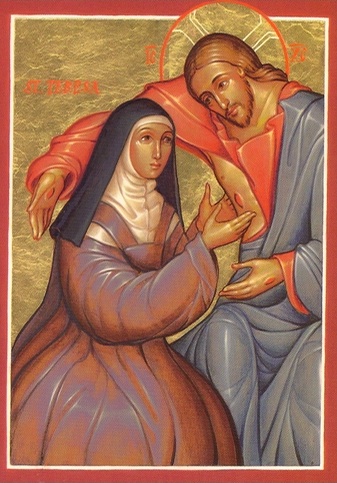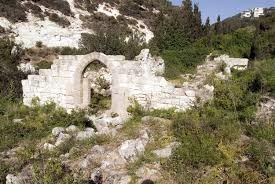Our prayer finds its roots in the Gospel, in the prayer of Jesus. We experience our call, our vocation, as a particular way of sharing in His prayer. It is as though Christ, when saying “Come, follow me”, gives to us a desire to follow Him in a life of prayer, or, it could be said that He implants within us a need to be occupied with Him and the Father in a very particular way. It is our deep desire to pray without ceasing, to allow the Spirit to pray in us.
Developing an awareness of the presence of God, learning to live in that presence, in silence and recollection, as our simple day unfolds, makes of everything a prayer. Our tradition experiences prayer as friendship, a personal relationship with our loving God – ‘Prayer in my opinion is nothing else than intimate, friendly sharing; it means taking time often to be alone with Him who we know loves us’, says St. Teresa. Prayer seen as friendship with Christ is typically Teresian and derives from her own intense love for the Sacred Humanity.
We are gifted with wonderful saints who help and guide us on this way of prayer, Teresa of Jesus (Avila), John of the Cross, Therese of Lisieux, Elizabeth of the Trinity to name but a few.

The high point of our day is of course the celebration of the Eucharist. All is gathered into this supreme prayer of Christ and the Church and all flows from it.
We also say the full Divine Office, or Prayer of the Church, which is composed mainly of psalms, hymns and readings from Scripture and is full of praise, thanksgiving and petition.
The most important hours, or periods of prayer, are Morning Prayer (Lauds) and Evening Prayer (Vespers). Our communities welcome people to join them for Mass and for Vespers.
The rhythm of the Divine Office sets the framework of our day as we come together in choir at intervals to recite the hours, seven in all. In addition to Lauds and Vespers they comprise the Office of Readings (Matins) and the three little hours of Terce, Sext and None. In the evening we say Night Prayer (Compline) which always ends with a hymn to Our Lady.
Apart from liturgical prayer we spend two hours in personal prayer each day, one in the morning and one in the evening. There is no particular method of prayer in Carmel. Each one is free to follow where God leads her.
Our spiritual reading, which we do for about an hour each day, feeds our prayer. We ponder the Scriptures, the works of our Carmelite Saints and the Fathers of the Church as well as more modern spiritual writers.
Prayer is at the heart of our Carmelite Spirituality
The first Carmelites were hermits living in caves on Mount Carmel in the Holy Land where they settled in the thirteenth century. They built a chapel and dedicated it to Our Lady, so they became known as the brothers of the Blessed Virgin Mary of Mount Carmel.
Since those early days silence and solitude have been an important part of Carmelite life.

Mount Carmel
History

The source of Carmelite Spirituality can be look back to the hermits who lived on Mount Carmel around the 12th century which is reflected in our Rule of life. It is the hermit life supported by community. When the hermits moved to Europe they began to share their spiritual riches with devout women.


